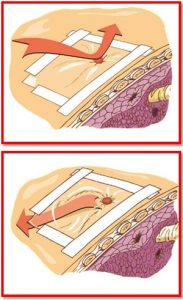CHEST INJURIES
CHEST INJURIES
The thorax is a bone-cartilage cage that contains and protects the organs of the respiratory and cardiovascular systems. Due to its large surface area, it is extremely exposed to external forces and is often affected by various types of injuries. Chest injuries can be classified into two major groups: closed (blunt) and open injuries.
With closed injuries, there is no interruption of the continuity of the chest skin, but this type of injury can also be life-threatening. The danger of these injuries is that the energy received by the outer part of the chest is indirectly transferred to the internal organs (heart, lungs, large blood vessels) whose injuries can directly endanger the life of the injured. Since most closed injuries remain localized to the musculoskeletal part of the chest (bruises, cracks, simple fractures of the ribs), the main symptom is pain in the affected part that occurs during pressure or breathing movements. In the case of injury to internal organs (compression of the lungs, penetration of air or blood into the space between the lungs and the chest wall), the symptoms are more dramatic: difficulty and rapid breathing, pale skin, rapid or weakened pulse. The degree of blunt chest injury can only be established in a hospital setting, so it is necessary to refer all injured to detailed examinations.
Open chest injuries are often associated with the use of cold steel and firearms. Even with this type of injury, the greatest danger lies in the possibility of injury to internal organs. Definitive care for such injuries is always hospital, but there are certain first aid procedures to increase the chances of quality recovery and survival.
If open wounds are actively bleeding then it is necessary to apply pressure with gauze or some other material to stop the bleeding.
An open chest wound with airflow indicates that the lung tissue has also been damaged. In this way, outside air enters the space between the lung tissue and the lungs and ultimately leads to the collapse of the lungs. Such an injury must be adequately cared for until arrival at the hospital. Disposal is quite simple and involves placing gauze or some other material over the wound. The gauze is fixed to the chest wall on three sides, while one side is left free. In this way, air from the outside cannot enter the inside of the chest while excess air from the inside can come out and thus relieve the lungs.
.
